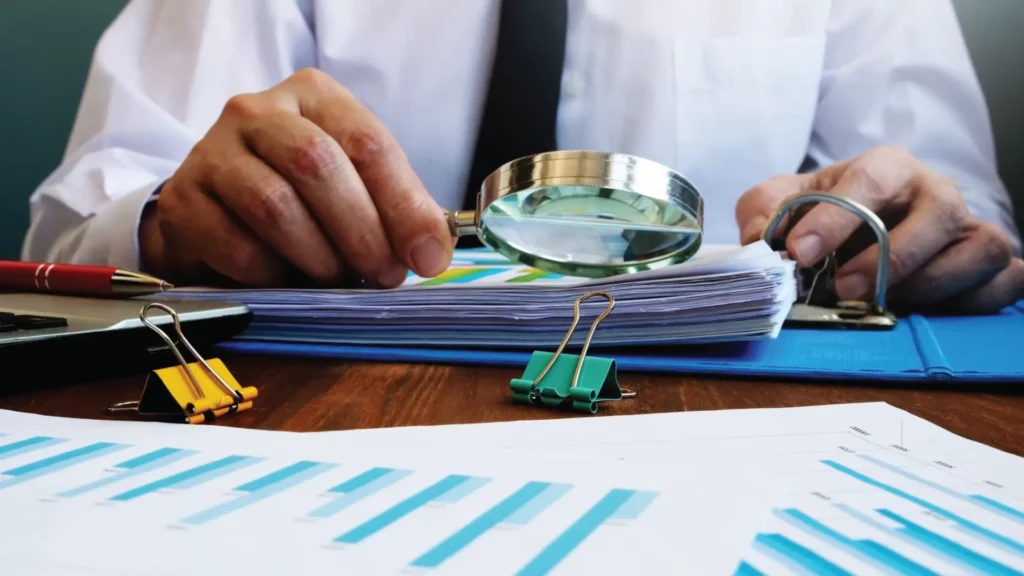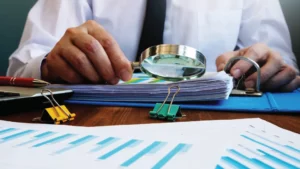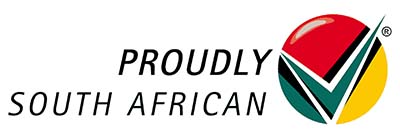Here are the steps on how to conduct an asset audit:
- Planning and Preparation
- Physical Verification
- Data Verification
- Reporting and Recommendations
- Use asset management software
- Conduct regular audits
- Involve internal and external auditors
Asset Verification Audits are a crucial part of managing your business resources.
In South Africa, this process can be a game-changer for your organization, helping you maintain accurate records, reduce losses, and ensure compliance with local regulations.
In this post, we’ll take a closer look at how to conduct effective asset audits in South Africa.
Key Facts
- Asset Verification Audits are crucial for managing business resources in South Africa.
- Prepare for the verification audit (Survey) by defining objectives, gathering necessary documentation, and assembling a capable audit team.
- During the audit, focus on planning, forming a team, gathering financial records, and developing checklists for effective execution.
- Physical verification involves locating assets, inspecting their condition, verifying asset tags, and reconciling discrepancies.
- Data verification includes reviewing asset records, analyzing asset movements, and identifying obsolete assets.
- Reporting and recommendations are essential, and the audit report should be presented to management for action.
- Additional considerations include using asset management software, scheduling regular audits, and involving internal and external auditors.
- The benefits of asset verification audits (Survey) include improved asset management, enhanced financial reporting, reduced risk of fraud and errors, and increased compliance.
- Best practices involve conducting regular audits, utilizing technology and software, and ensuring employee training and awareness.
Preparing For The Audit
- Define Audit Objectives: Before diving into the audit, it’s essential to clearly define your objectives. Are you looking to track assets, confirm their condition, or identify discrepancies? Setting clear goals helps you stay focused during the audit.
- Gather Necessary Documentation: Collect all relevant paperwork and records related to your assets. This includes purchase orders, invoices, and maintenance logs, which will be essential for cross-referencing during the audit.
- Assemble the Audit Verification Team: It’s a team effort! Get a group of people together who know your assets and their locations. Assign responsibilities and ensure everyone is on the same page.
Conducting The Audit
Here are the steps on how to conduct an asset audit:
1. Planning and Preparation
- Establish the scope of the audit: Determine which assets will be included in the audit and the timeframe for the audit.
- Form an audit team: Assemble a team with the necessary skills and expertise to conduct the audit.
- Gather financial records: Collect financial records related to the assets, such as purchase orders, invoices, and depreciation schedules.
- Develop audit checklists: Create checklists to ensure that all relevant information is gathered during the audit.
2. Physical Verification
- Locate assets: Identify the physical location of each asset.
- Inspect assets: Examine the condition of each asset and identify any damage or deterioration.
- Verify asset tags: Check that each asset is properly tagged with an identification number.
- Reconcile discrepancies: Investigate and resolve any discrepancies between the asset register and the physical inventory.
3. Data Verification
- Review asset records: Verify the accuracy of asset records, including asset descriptions, acquisition costs, depreciation rates, and accumulated depreciation.
- Analyze asset movements: Track the movement of assets between departments or locations.
- Identify obsolete or unused assets: Identify assets that are no longer in use or are no longer needed by the company.
4. Reporting and Recommendations
- Prepare audit report: Document the findings of the audit, including any discrepancies, recommendations for improvement, and potential risks.
- Present audit report: Present the audit report to management and discuss the findings and recommendations.
- Implement recommendations: Implement the recommended changes to improve asset management processes and controls.
5. Additional Considerations
- Use asset management software: Consider using asset management software to track assets, automate data collection, and generate reports.
- Conduct regular audits: Schedule regular asset audits to ensure the ongoing accuracy of asset records and to identify potential risks early on.
- Involve internal and external auditors: Consider involving both internal and external auditors to provide an independent perspective on the asset audit process.
Benefits Of Asset Audits
- Improved asset management: Asset Verification Audits help companies improve the management of their assets by identifying and correcting discrepancies, preventing asset loss, and optimizing asset utilization.
- Enhanced financial reporting: Accurate asset records contribute to more reliable financial reporting and can improve the company’s financial performance.
- Reduced risk of fraud and errors: Asset Verification Audits can help detect and prevent fraud and errors related to asset misappropriation, depreciation errors, and inaccurate asset valuations.
- Increased compliance: Asset Verification Audits can help ensure compliance with accounting standards, regulatory requirements, and contractual obligations.
Best Practices For Asset Audits
- Regular Audits and Continuous Monitoring: Conduct regular audits to maintain the accuracy of your asset records. Continuous monitoring ensures you stay on top of any changes.
- Utilizing Technology and Software: Invest in asset management software and technology that can streamline your audit process and improve data accuracy.
- Employee Training and Awareness: Train your employees to be vigilant about asset management and the audit process. Their involvement is key to success.
Conclusion
Conducting asset audits in South Africa is a proactive way to manage your resources effectively.
By following these steps and embracing best practices, you can maintain accurate records, reduce losses, and ensure compliance with local regulations.
Remember, asset audits are not just about numbers; they are about people and the success of your business.
So, get started and make a positive change in your organization today!





